
🏄Start with fresh veggies like broccoli, bell peppers, celery, carrots, and radishes. These dippers add crunch and color and balance all the other carb-heavy options. We chose hakurei turnips for their unique flavor and texture. You can really sink your teeth into them!
🏄Crackers are up next. Many options are available, including gluten-free choices. It’s always great to have a variety of textures, including both soft and crunchy. We chose almond crackers for their salty and crunchy taste.

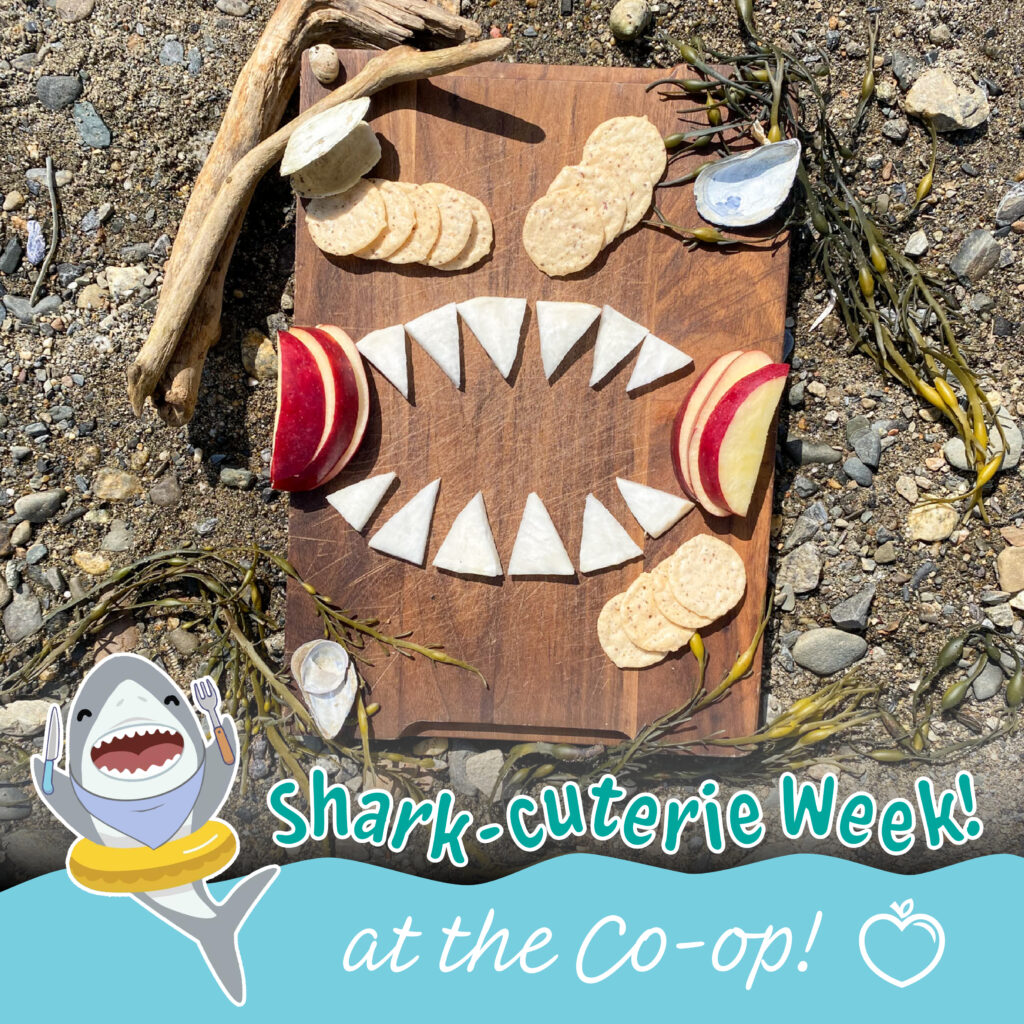
🏄Apples are delicious and are a great substitute for crackers. And don’t forget seasonal fruits like pears, apricots, and blueberries.
🏄Jams and spreads like honey, mustard, jellies, sweet or savory chutneys, and tapenades add layers to your board. The fun is in experimenting with flavor combos. We chose fig jam because it is fin-tastic!


🏄Grapes are a favorite on a charcuterie board for a reason — they don’t oxidize, they are fine at room temperature, and they complement meat and cheese flavors.
🏄Traditional all-meat charcuterie boards often include cornichons, another name for pickled cucumber, or pickled onions to contrast the fattier flavors of salty meats and rich cheeses. You could also choose brined or oil-cured olives, marinated artichokes, roasted red peppers, or pickled vegetables. We chose baby dill pickles because they serve up a snappy bite!
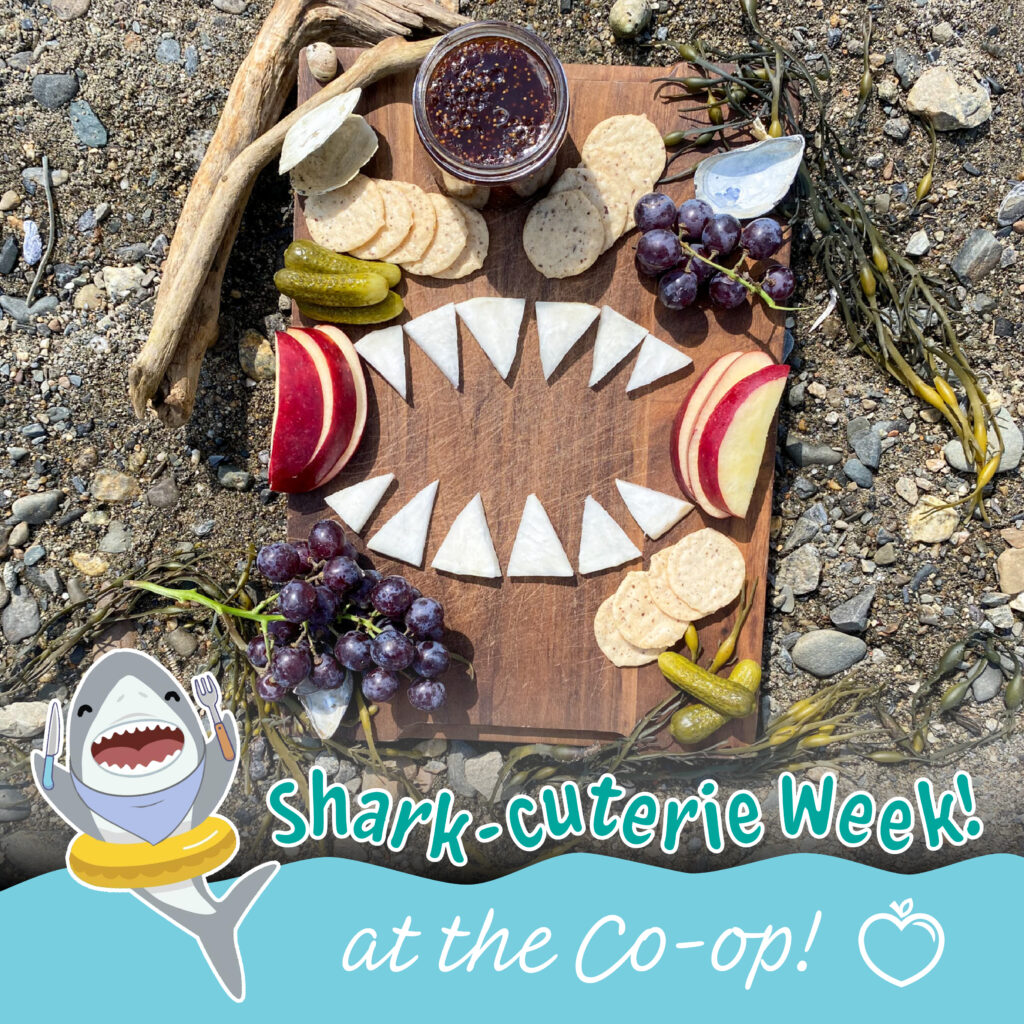

🏄When creating a shark-cuterie board, aim for various textures and ages of cheese, including mild and strong options. Some suggestions are:
Soft: Brie, chèvre, camembert, fontina
Hard or Semisoft: Manchego, Gruyère, aged cheddar, Gouda
Marinated or Flavored: marinated feta, fresh mozzarella, herb-and-garlic cheese spread
🏄There are as many types of cured meats in the world as there are sharks in the sea (well, almost). Curing is an ancient method to preserve protein, and various regions and cultures around the world have their own styles of charcuterie — even unique breeds of livestock from which the meats are made. We chose Genoa salami for its herbed edges and salt-cured taste.
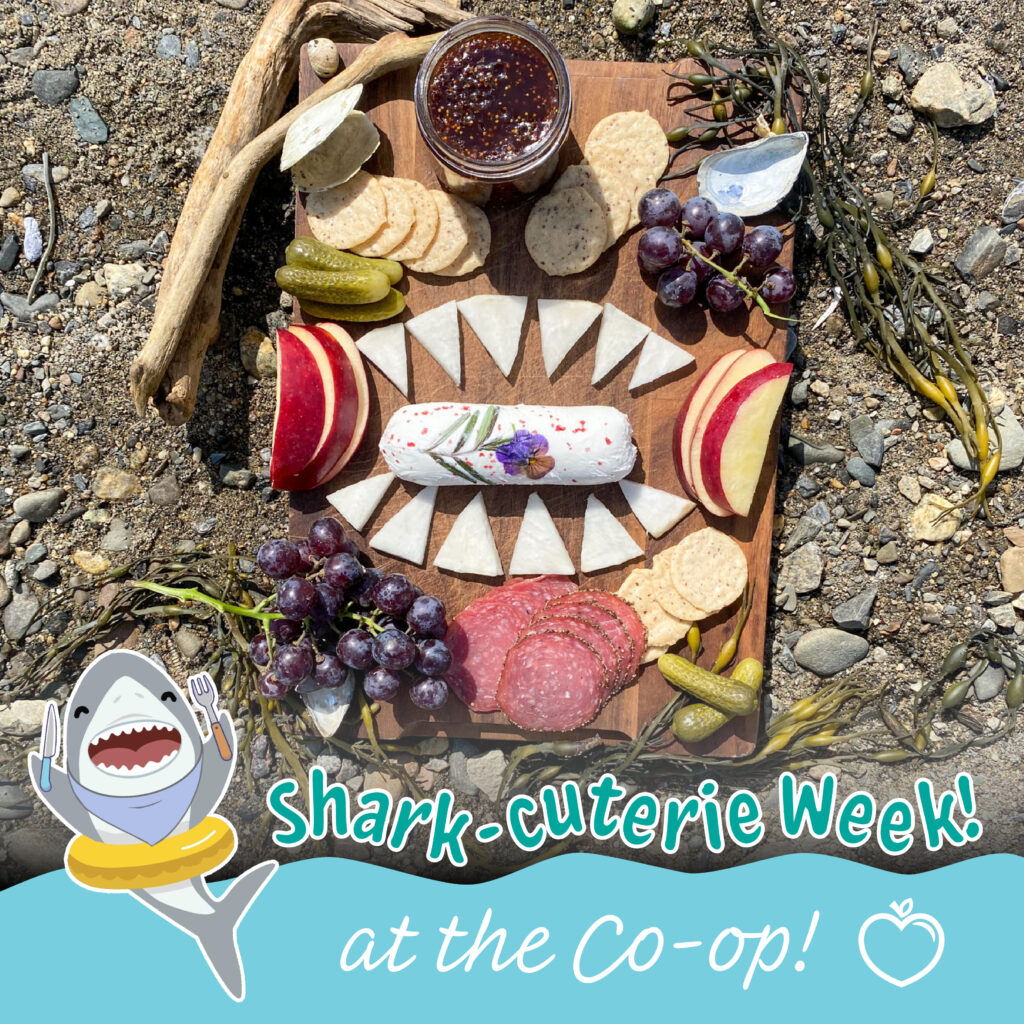
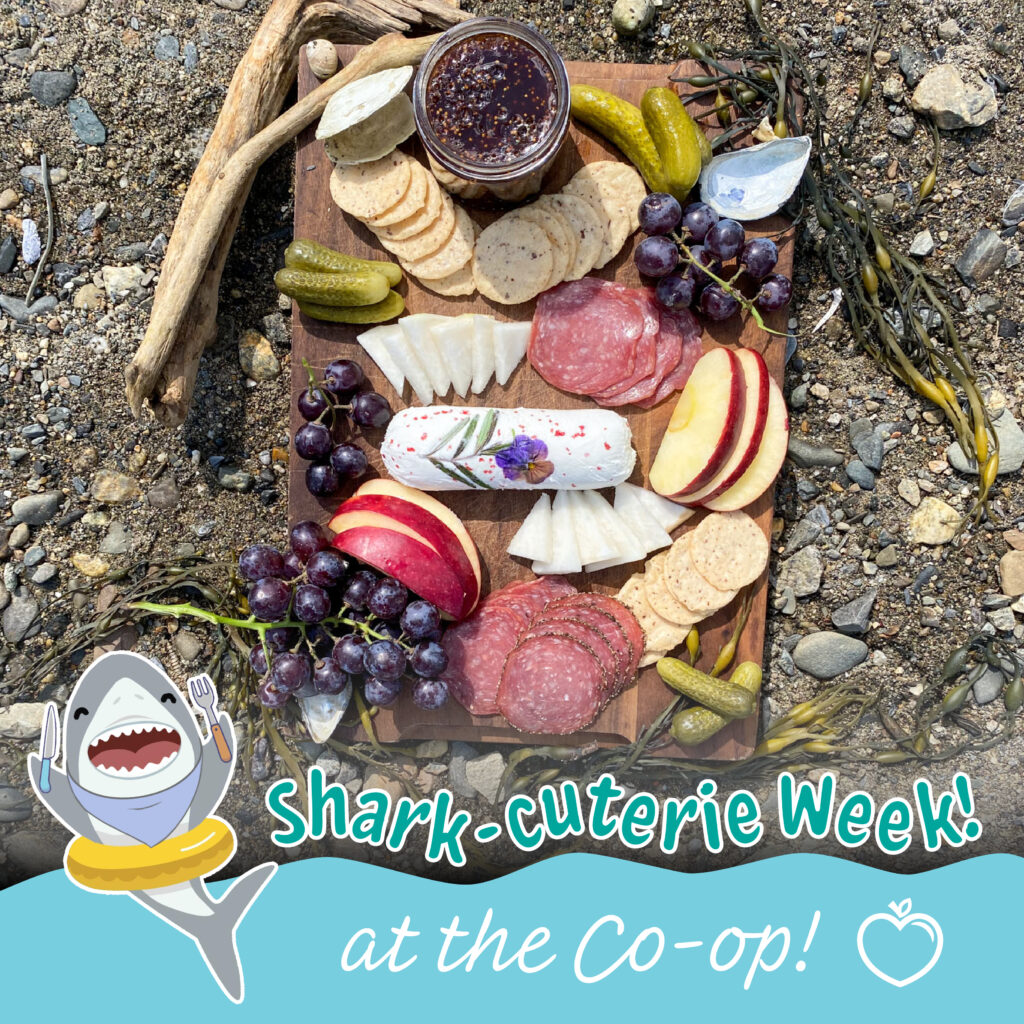
🏄Most charcuterie meats and cheeses are tastiest when served at room temperature. Keep in mind that perishable items shouldn’t sit out for more than two hours. It’s a good idea to have a small selection of “refill” items, such as sliced meats and cheeses, in the refrigerator so they’re ready to go when the board needs restocking.
Charcuterie boards are a quick and easy way to entertain and accommodate dietary needs. They involve purchasing meats, cheeses, and a few other items and arranging them on a flat surface. They are simple and impressive to put together, involving no cooking, and can be served year-round. If you love the idea of a charcuterie board but are concerned about the cost, consider gathering friends and family and asking guests to bring an item or two to contribute. Be sure to surf your pantry for items to add before you go shopping. Have fun, stay safe, and add some personal touches to make the board your own!
Shark Facts!
Are you hungry to learn more about sharks? We are too! Check out these facts about the eight shark species in the Gulf of Maine, each playing a vital role in the marine ecosystem. The great white shark, known for its size and power, often garners the most attention. The porbeagle, similar in appearance to the great white but smaller, is also found here. The blue shark, with its sleek body and vibrant color, is a common sight, as is the shortfin mako, known for its speed and agility. The thresher shark, distinguished by its long tail, hunts with unique methods. The basking shark, the second-largest fish in the world, feeds on plankton near the surface. The sand tiger shark, with its menacing teeth, is actually quite docile. Lastly, the spiny dogfish, a smaller shark species, is abundant and often seen in schools. These diverse species contribute to the rich biodiversity of the Gulf of Maine.
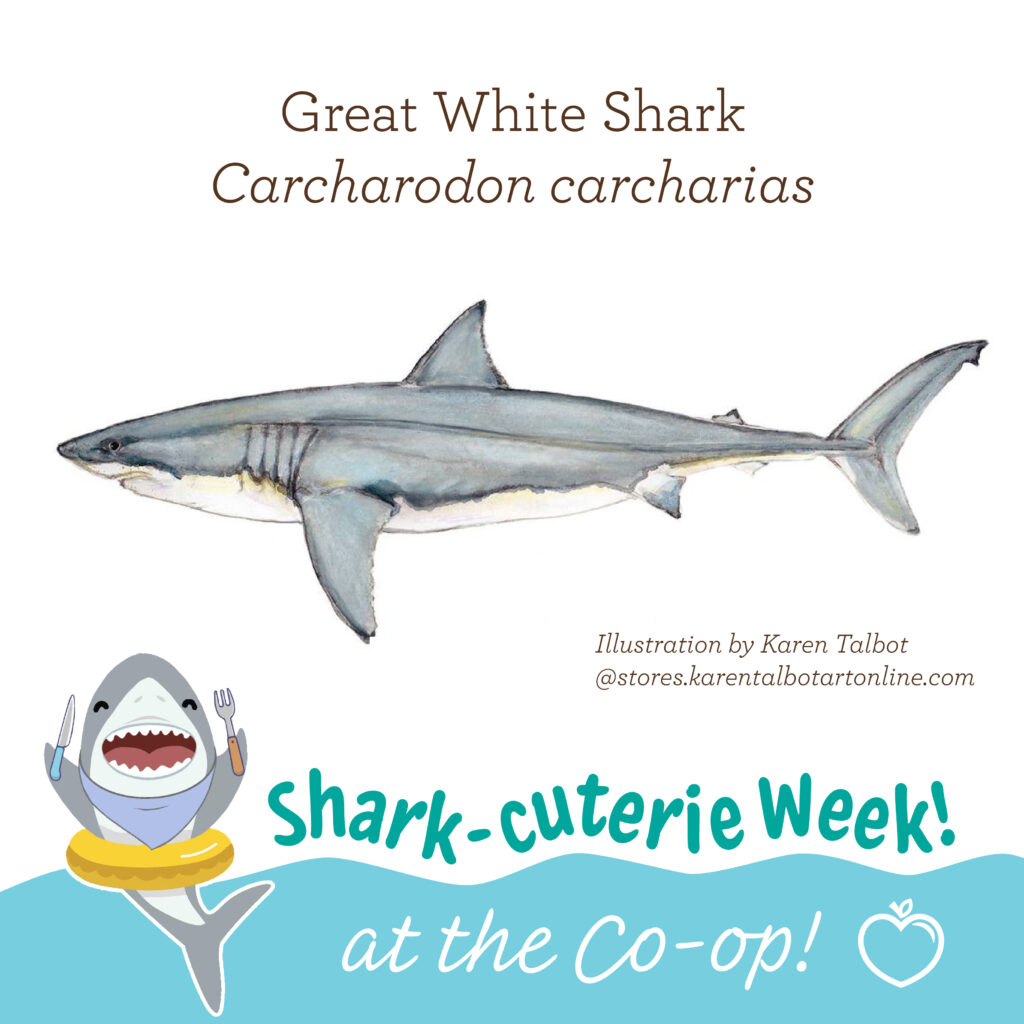
🦈White Sharks give birth to live young. Gestation takes about 12 months, and females can give birth to 2–14 pups per litter in the spring or summer. Males mature at around 9–10 years old, and females mature at around 14–16 years old.
🦈Porbeagle sharks are vulnerable to overfishing and exploitation due to their slow growth, late maturity, and small litters.
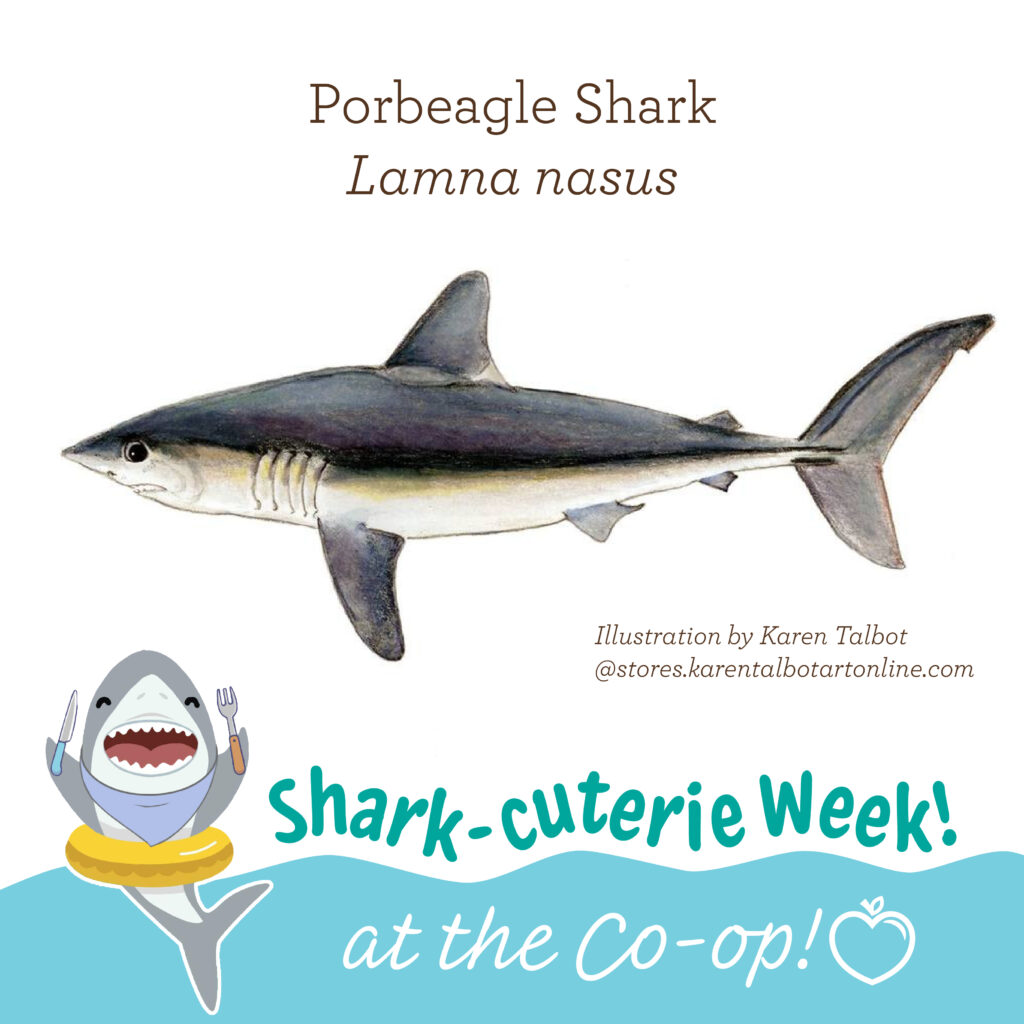
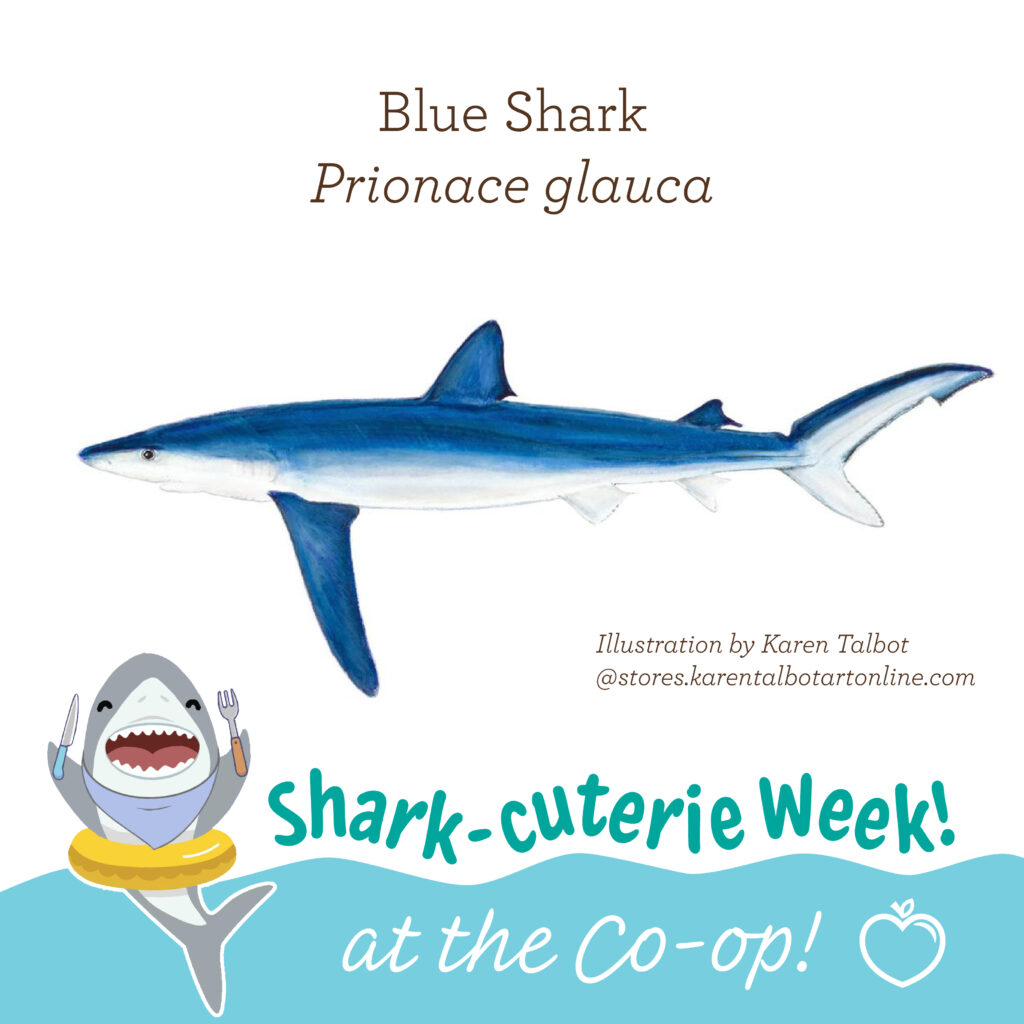
🦈Some estimates say that 72–100 million sharks are killed each year for their fins, which are used in shark fin soup and to symbolize status. The blue shark is one of the most commonly traded species, with around 20 million killed annually.
🦈Shortfin mako sharks are the fastest sharks and one of the fastest fish in the world, with top speeds of up to 45 miles per hour.

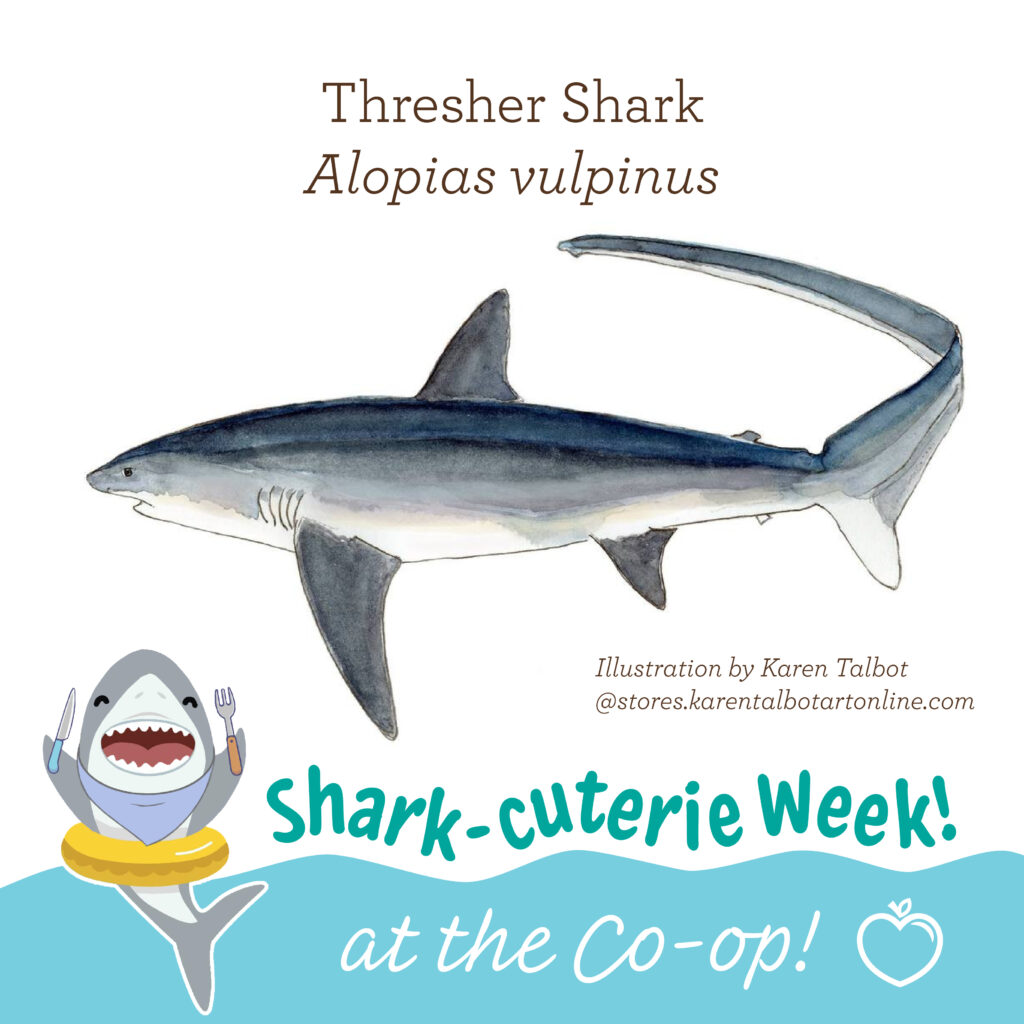
🦈Unlike most other sharks, thresher sharks have a unique adaptation called regional endothermy, allowing them to maintain their body temperature above that of the surrounding water in certain areas. This allows them to venture into cooler waters and chase prey at varying depths.
🦈Basking sharks are the second largest fish in the ocean, growing to a maximum length of 45 feet and weighing 10,000 pounds. They are filter feeders.
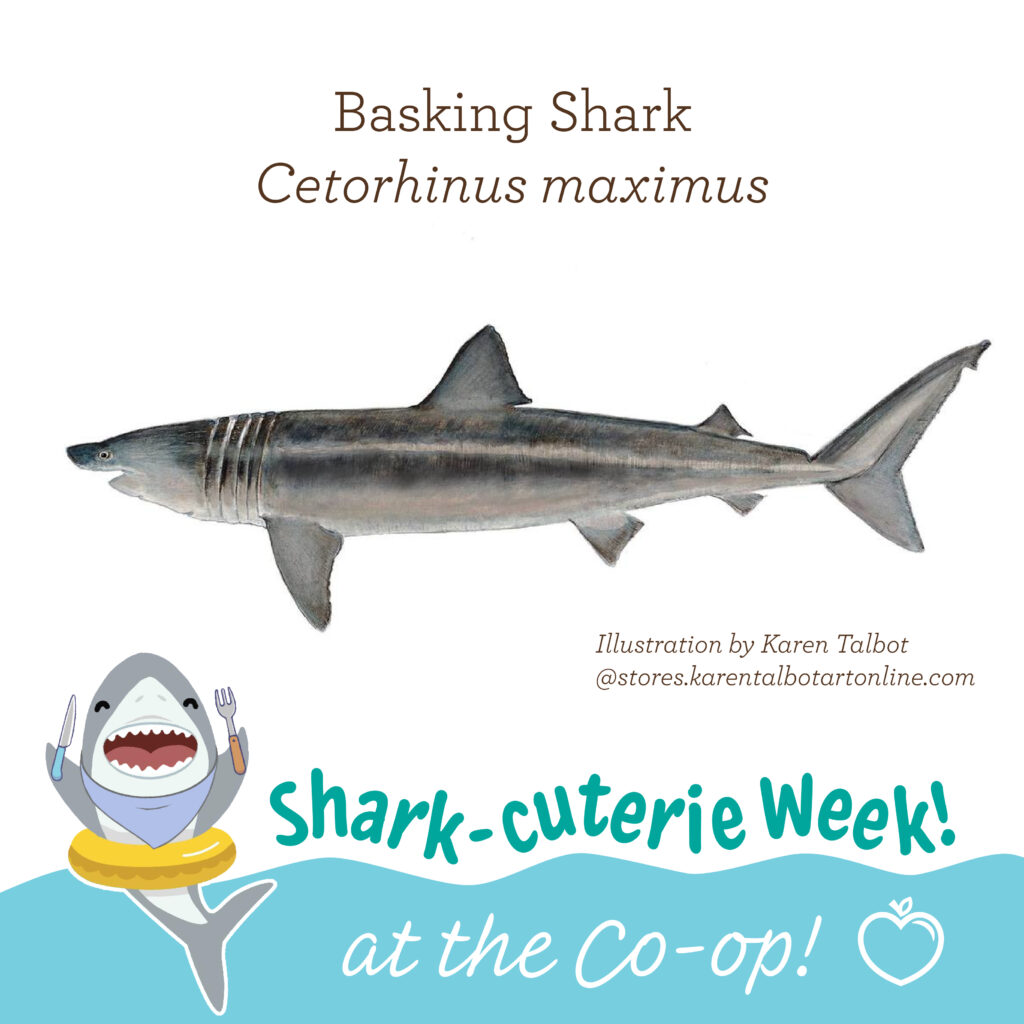
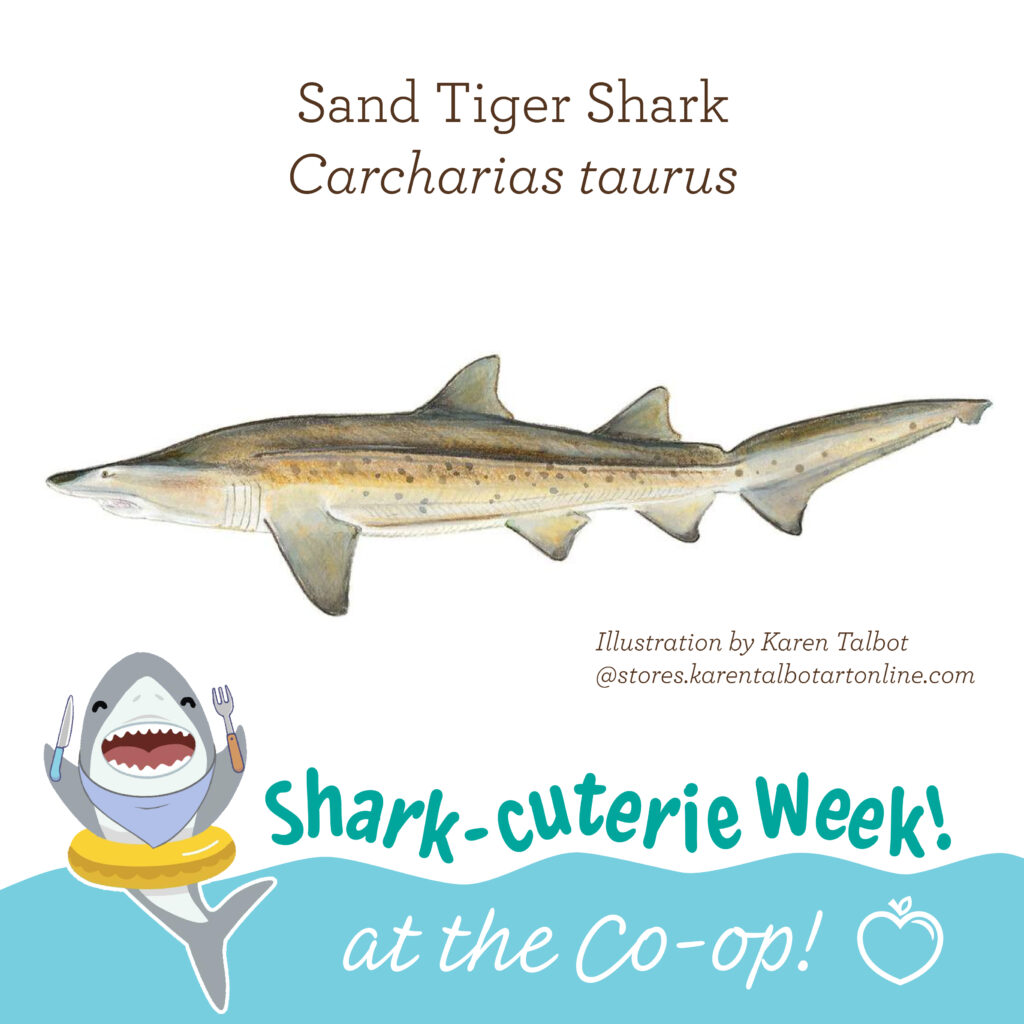
🦈Sand tiger sharks are the only sharks known to gulp air at the surface and store it in their stomachs to maintain neutral buoyancy. This allows them to float motionless while waiting for prey.
🦈Spiny dogfish are long-distance travelers. One tagged and released spiny dogfish from Washington State was later found off the coast of Japan, a distance of 5,000 miles. Unlike most sharks, spiny dogfish are venomous and have two spines, one in front of each dorsal fin, that secrete a mild venom. These spines are a defense mechanism against predators like seals and sixgill sharks.
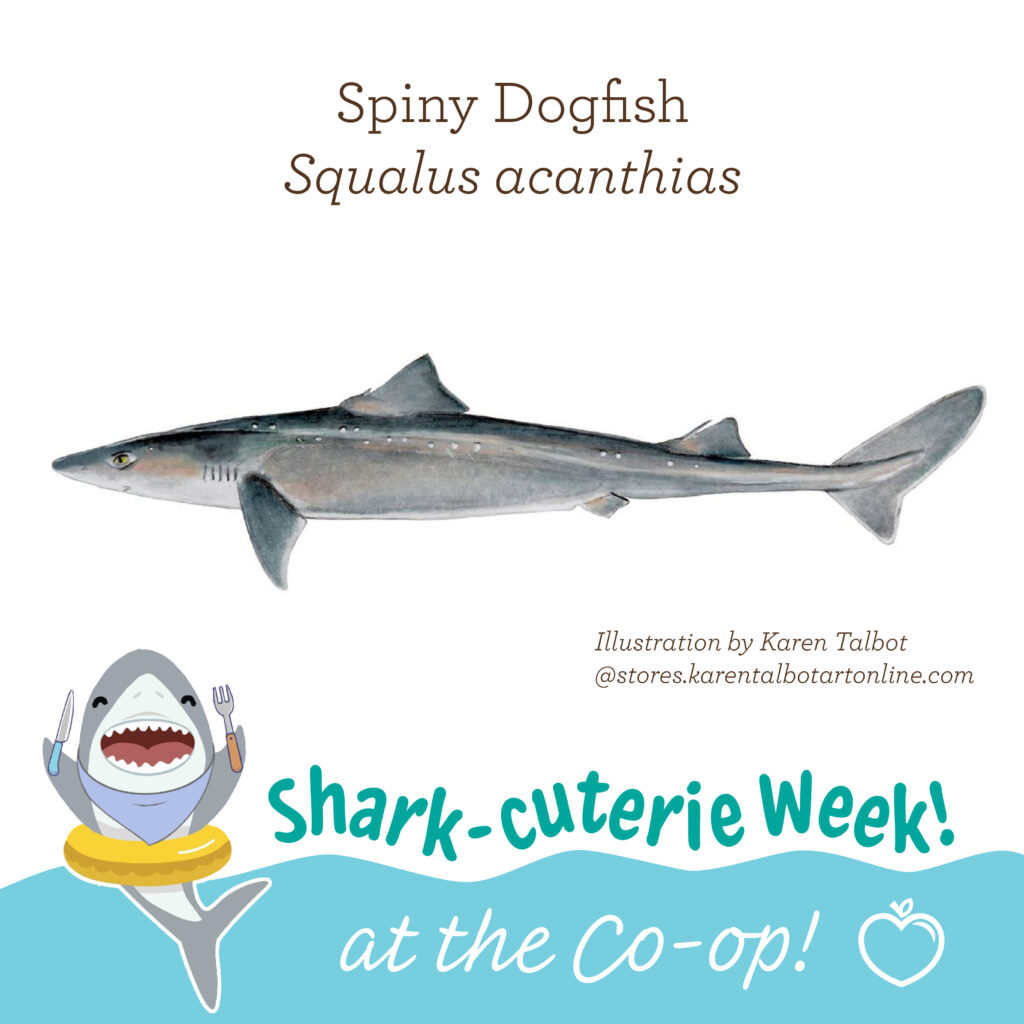
Thanks for coming along for this delicious and educational ride! We hope you enjoyed it as much as we did. If you are craving some more creative ideas for your next charcuterie board check out all the resources from Bon Appétit. Or are you still thinking about these amazing shark illustrations? Check out Karen Talbot, a local Maine illustrator! If you are inspired to learn more about sharks and shark conservation, head on over to Save Our Seas and learn about our oceans and the work that is happening to move education and conversation forward.

